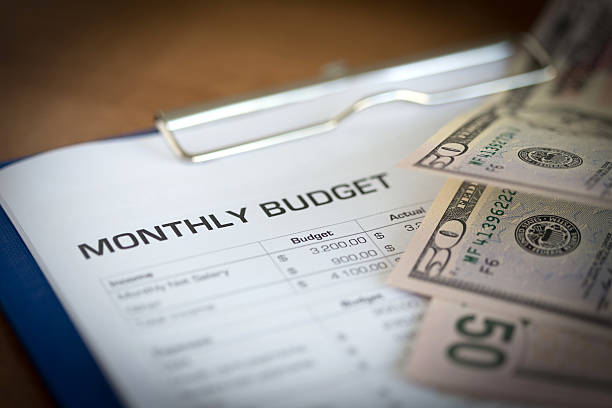
by ARTIS COMMERCIAL CAPITAL | Dec 27, 2022 | Blog
Buying commercial property is often the gateway to big profits. Securing a great piece of commercial real estate can come at a hefty price. Many people need to finance these types of purchases. One possibility for financing is a bridge loan.
Bridge Loans: A Brief Review
A bridge loan is a short-term loan used most commonly for real estate purchases. Its name is suggestive of its main use: It is taken out to “bridge” the gap between property purchase, and the arrival of funds from the selling of another property or securing a long-term mortgage.
Why Utilize a Bridge Loan?
A person interested in purchasing commercial property may be interested in obtaining a bridge loan for several reasons:
The deal may be available only for a very short time and speed is of the essence
A cheaper long-term mortgage is coming, but the funding won’t arrive for a period of time
You intend to purchase the property using the proceeds from the sale of another property that hasn’t closed yet
A bridge loan can come with high rates, so those considering one need to be fully aware of the costs involved. That is why they are generally used for short-term situations.
Using a Bridge Loan for Commercial Real Estate
In some cases, a bridge loan may be the ideal method to secure a coveted commercial property. For example, if there are no good deals available in the traditional mortgage market, a bridge loan may be preferable.
If you are looking to purchase commercial property, look to Artis Commercial Capital for your financing needs. They will answer any additional questions that you might have about bridge loans as well as suggest other options that may be suitable for your specific situation.

by ARTIS COMMERCIAL CAPITAL | Dec 20, 2022 | Blog
When you’re just getting your business off the ground, you may start brainstorming things you can do to quickly reach your goals. This can sometimes mean that you spend more than you need to. This excess spending may be the reason that your business is not growing as much as you’d like.
Sure, everyone wants to start making money as quickly as possible- but sometimes, spending money on things you don’t need to before you start making money could be the reason you’re not growing.
9 things that it would be best to put to the side until your business starts making money:
- Hiring too many full-time employees.
- Hiring underqualified workers.
- Renting office space
- Implementing cheap, ineffective, short-term solutions to long-term issues.
- Offering “over the top” perks for your employees
- Booking business travel at the last minute instead of planning a head
- Outsourcing leadership roles
- Reimbursement of costly business expenses
- Throwing high-cost celebrations
Conclusion
As a business owner, it’s important that you understand that improving your business and ensuring it operates smoothly does involve spending money. However, it is not possible to make up for spending too much when you’re just starting out.
Before you start spending a lot of money on your business, you need to work on building your income first. Then, you can start spending money to improve the business. If you will wait on these 9 things until your business starts making money, it will be more than worth it in the end. This way, you can decide if these are really worthy expenses or if you should just leave them alone entirely.
If you want to learn more about spending money on your business, contact Artis Commercial Capital. We’ll be happy to help you learn what is necessary and what can wait.

by ARTIS COMMERCIAL CAPITAL | Dec 13, 2022 | Blog
Commercial real estate can be a very lucrative investment. Acquiring a coveted piece of investment property can be daunting, however, because of the high costs involved. That’s why many people turn to external financing for their commercial real-estate acquisitions.
Bridge Loans: A Very Brief Explanation
Bridge loans are used in many real estate transactions. They are short-term in nature and meant to “bridge the gap” between property acquisition and the arrival of funds from another source. They can be a real blessing when longer-term forms of financing aren’t expected to be available for a bit of time. A decision on funding is usually made in short order and your money arrives fast.
Examples of Wise Use of Bridge Loans
Here are a few examples of situations for which bridge loans can make sense:
A Sudden Buying Opportunity Comes Up. From time to time, a particularly coveted piece of property comes to market quite suddenly. A bridge loan may be just the option to choose in order to seize the opportunity.
Your Credit Score Is Not Stellar. If your credit record is not top-notch, you may find it difficult to arrange financing from traditional sources. In such a case, a bridge loan can be a good idea.
You Own an Exiting Property in Need of Renovation. For situations where renovation is needed to attract new clients or business partners, and the work can be completed in a short time frame, a bridge loan can be an excellent choice.
Obtain Funding from Artis Commercial Capital
Bridge loans are easier to obtain than other property financing types such as a loan from a traditional bank. Connect with Artis Commercial Capital for your real estate financing needs. They offer bridge loans, which may be just the ticket for your real estate investment plans.

by ARTIS COMMERCIAL CAPITAL | Dec 6, 2022 | Blog
As you grow your business, you will eventually need to develop new products, tech, systems, and even industries. Growth is critical for the success of your business and the economy, which requires innovation to grow. That being said, innovation requires research and development, often referred to as R&D.
Many times, these changes will fail. This means you have zero return on investment- or ROI, or must go through several different stages of development before they are profitable. These costs discourage businesses from investing in research and development, which is why this tax credit was developed.
R&D Tax Credit Program Explained
The R&D Tax Credit Program is part of the United States tax code and is in place to encourage companies to invest in research and innovation. First introduced in 1981 and renewed throughout the decades, President Barack Obama signed what we know as the PATH Act to extend the R&D tax credit, as well as expand its provisions.
Tax credits allow the taxpayer to offset the value of the credit against their tax liability- the R&D tax credit covers expenses paid/incurred for qualified research.
Benefits of R&D Tax Credit
Qualified tax credits for R&D is typically believed to stimulate the economy because it increases innovation. However, there are some business groups that believe these benefits are lost under the new TCJA because under these new rules, a business must amortize their costs associated with R&D over five years instead of immediately deducting them. Here are a few benefits of the R&D tax credit:
- Reduces federal/state tax liabilities for the current year and future years
- Increases market value and cash flow of your company
- Reduces the tax rate of your business
- Allows you to keep your profits
Can I claim the R&D Tax Credit?
In 2004, the language was changed to determine who can take qualified tax credits for R&D. At this time, companies that can take the credit include those that test products, engage in data science/analysis, employ engineers, and outsource research.
Documents Needed to Claim R&D Tax Credit
In order to claim the credit, you must have sufficient documentation to prove that it’s a qualified tax credit. This may include:
- Payroll information
- Business expenses associated with R&D vs. those that were not
- Copies of contracts/invoices for third-party research contractors
- Timekeeping records for all activities involved in R&D
- Any documentation related to R&D activities
Does Your Business Qualify for the R&D Tax Credit?
You can find the rules for the R&D tax credit in Section 41 of the IRS tax code. Any taxpayer who incurs qualified R&D expenses in the United States is eligible to take this tax credit.
Qualified Expenses
- Wages paid to employees involved in R&D and those who supervise/support R&D
- Supplies (other than land/property) used in R&D
- Costs paid to third-party contractors involved in R&D
- Payments to research institutions/organizations associated with R&D
- Cost of developing patent
Expenses that Do Not Qualify
- Research conducted after commercial production
- Research to adapt existing product/process
- Duplication of product/process in existence
- Market research
- Research related to software for internal use
- Research conducted outside of United States territories
- Research in social sciences, humanities, and arts
- Research funded by another grant, organization, person, or government
- Fixed assets associated with running your business
Conclusion
If you are interested in learning more about the R&D tax credit and how it may apply to your business, contact Artis Commercial Capital. We can explain this and other tax credits that your business may be able to use on your next tax return.




